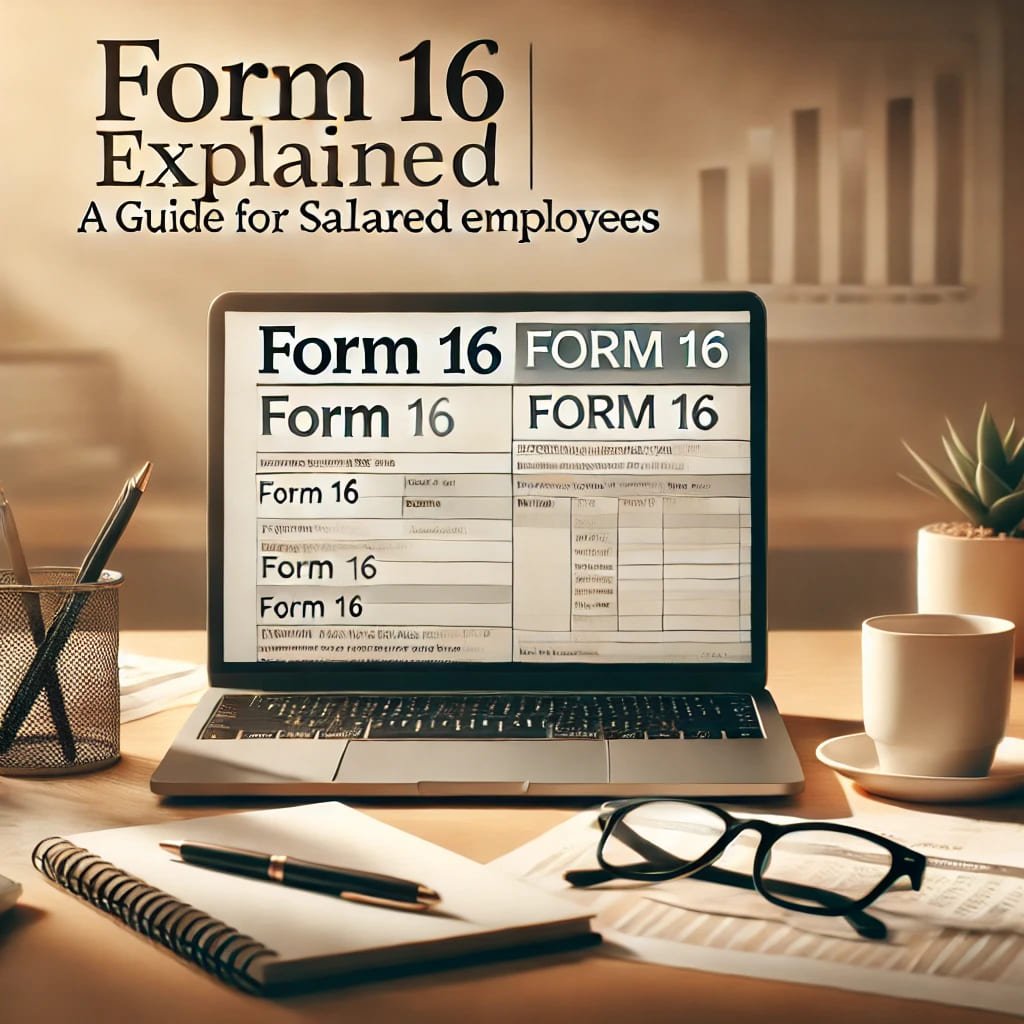
For salaried individuals in India, Form 16 is a critical document that plays a pivotal role in the process of filing income tax returns. Often referred to as the salary TDS certificate, this form is issued annually by employers and serves as proof that Tax Deducted at Source (TDS) has been deducted from an employee’s salary and deposited with the government. Let’s dive into the essentials of Form 16, its components, uses, and why every salaried employee should understand it thoroughly.
What is Form 16?
Form 16 is a certificate issued under Section 203 of the Income-tax Act, 1961, provided by the employer to the employee. It shows a detailed summary of the salary paid and the TDS deducted during the financial year. If TDS has been deducted from your salary, your employer is mandated to issue Form 16 by 15th June of the assessment year following the financial year in which the tax was deducted.
Why is Form 16 Important?
- Proof of TDS: It certifies that tax has been deducted and deposited with the Income Tax Department.
- Income Tax Return Filing: It simplifies the ITR filing process by consolidating all salary-related tax information.
- Loan Applications: It is often required by banks or financial institutions while processing loans.
- Visa Processing: Form 16 is also used as income proof when applying for visas.
Components of Form 16
Form 16 is broadly divided into two parts: Part A and Part B.
Part A:
Issued and downloaded from the TRACES portal by the employer, this part includes:
- Name and address of the employer and employee
- PAN and TAN of the employer
- PAN of the employee
- Summary of TDS deducted and deposited quarterly
- Period of employment
Part B:
Issued and downloaded from the TRACES portal by the employer (Prepared by the employer in certain cases), this part details:
- Salary breakup: basic salary, HRA, special allowance, etc.
- Deductions under Chapter VI-A (Sections 80C, 80D, 80G, etc.)
- Taxable income and tax computation
- Rebate under Section 87A (if applicable)
- Education cess and final tax liability
How to Use Form 16 for Filing Income Tax Returns
When filing ITR, Form 16 provides all the necessary data:
- Salary Details: Use Part B to declare income under “Income from Salaries”.
- TDS Details: Cross-check TDS details in Part A with Form 26AS.
- Deductions: Ensure all deductions claimed (LIC, PPF, home loan interest, etc.) are reflected accurately.
- Tax Calculation: The final tax liability and the amount already paid via TDS help determine if additional tax needs to be paid or if a refund is due.
Common Questions Around Form 16
1. What if I have changed jobs?
You will receive a separate Form 16 from each employer covering the period of your employment.
2. Can I file ITR without Form 16?
Yes. While Form 16 simplifies the process, you can file returns using payslips, Form 26AS, and investment proofs.
3. What if TDS is not deducted?
If your income is below the taxable limit or no TDS is deducted, the employer may not issue Form 16. However, you are still responsible for filing your ITR if your income exceeds the basic exemption limit.
Key Deadlines and Responsibilities
- Employers must issue Form 16 by 15th June following the end of the financial year.
- Employees should verify the details mentioned and reconcile with their Form 26AS and payslips.
- It is the employee’s responsibility to ensure correct filing of returns, even if the employer deducts TDS.
Conclusion
Understanding Form 16 is essential for every salaried employee in India. It’s not just a document but a comprehensive summary of your income and tax compliance for the year. Whether you’re filing your ITR, applying for a loan, or just organizing your financial records, Form 16 serves as a valuable resource. Keep it safe, verify it thoroughly, and make sure it aligns with your financial goals and obligations.